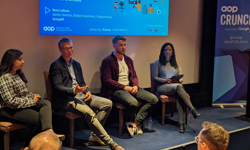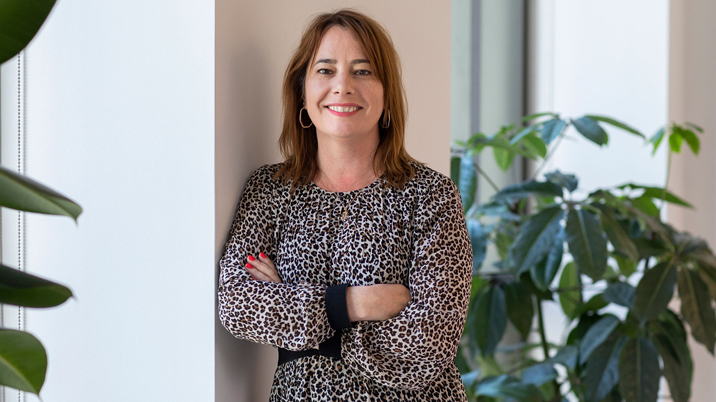
From launching consumer champion the Good Housekeeping Institute 98 years ago to announcing its new future-facing experiences division HearstX this May, Hearst UK has a history of staying one step ahead. And it’s a strategy that in today’s increasingly complex, fast moving and ever-changing media landscape, is more important than ever.
“We’re now a digital-first business from a commercial revenue point of view, which is great,” says Hearst UK’s chief commercial officer, Jane Wolfson.
“But our digital transformation is an ongoing journey. It’s already been through brand content and programmatic, and it’s now going through first-party data, commerce and experiential. Every day, you think, oh, there’s something new to keep up with. It’s non-stop. And HearstX is just the latest demonstration of this.”
Re-imagining events
Hearst UK has a long track record in branded events, which include Country Living shows and the Harper’s Bazaar Women of the Year Awards. For many years, these served primarily as physical destinations for consumers to explore their favourite brands. Then came covid. And, like many, Hearst UK re-imagined those events it could deliver digitally.
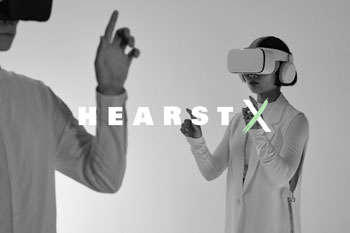
This is what’s driven the thinking behind replacing its existing events business with HearstX, which will create experiences for both physical and digital worlds, leverage emerging technologies including augmented reality and virtual reality, and create bespoke curated experiences by repurposing flagship brand events.
“It’s probably our most exciting recent development,” Wolfson continues. “And it’s all part of our strategy to make our brands live in different universes. Obviously, it will appeal to some audiences more than others. But we believe the potential is huge.”
Aside from AR and VR, Hearst UK is also exploring bringing virtual influencers – an idea already launched in China, by Chinese Elle – to the UK this autumn. And it is developing plans with an as yet unnamed platform partner to take Cosmopolitan into the metaverse.
“Some of this may sound a bit faddy,” she admits. “But it’s all about finding new and innovative ways to bring in new audiences by showcasing our brands on as many different platforms as we can. We already knew our audiences like to engage with us online. The pandemic showed us the extent to which digital extends that, and reach, which is what we will now build on.”
Hearst UK publishes 21 well-known brands – headliners include Cosmopolitan and Good Housekeeping. And its focus is on building, expanding, and capitalising on each in an ever-increasing variety of ways. Which makes Wolfson’s brief a busy one.
She heads agency and direct sales and leads Hearst Solutions UK – which delivers premium content solutions and experiences through data-driven insight – and, also, Hearst Global Solutions – the company’s London-based international commercial division.
She is also responsible for maximising revenues across display advertising, branded content, data and insight, experiences, licensing, accreditation, and Hearst’s content agency.
Named one of AdAge’s Women to Watch Europe in 2020, she joined Hearst UK’s commercial division in 2015 from IPG, where she was head of investment and commercial strategy. She has been in her current job since 2019.
“Since taking over my current role, a priority has been ensuring all the people here have a very clear understanding of what’s expected of them, and I’ve re-organised the commercial team (of around 100 people) accordingly,” Wolfson says.
Beyond brands
“Back in the day, we would sell by brand a lot more. With the move to digital, we have focused a lot more on business challenge solving. So, we now focus on our entire audience.
“Obviously, the individual brands are still hugely important – they are the absolute heart of everything we do and we have just passed one million print subscriptions, which shows the level of audiences’ engagement. But now it’s about making sure people sell across our whole portfolio.”
And her whole portfolio is no longer ‘just’ the print and digital brands as it now spans a wide range of revenue diversification opportunities, which have significantly expanded over the past couple of years, and now also include accreditation and licensing to data matching with clients and, of course, events.
Cumulatively, commerce revenue has grown by around 300% during the pandemic period, with much of this growth affiliate-driven.
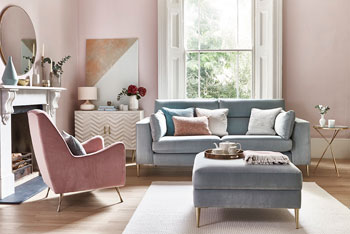
“Talking to audiences from a through-the-funnel perspective – from creating initial brand awareness campaigns right through to triggering point of purchase – is one thing we now want to focus on,” Wolfson says, citing shoppable experiences and live commerce – which is now big business in China – as a fast-emerging area of interest.
The aim, she adds, is to provide “an end-to-end customer journey”.
Other priorities this year include further building licensing. Good Housekeeping, which will run its inaugural Good Housekeeping Live Festival on 14-15th October, recently launched its first ever furniture collection, GH100 – a nod to its centenary – with DFS, for example.
Expanding accreditation capabilities
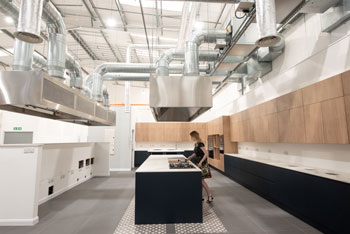
Then there’s accreditation – Hearst UK is now working to ensure all of its brands have the authority in product testing Good Housekeeping has through the Good Housekeeping Institute.
To this end, the Good Housekeeping Institute recently expanded into the Hearst Institute to enable the rest of the UK-based titles to use the same resources, experts and testing facility that has so strengthened Good Housekeeping readers’ trust in the Good Housekeeping brand.
Related plans involve using Hearst UK’s 50,000-strong reader panel to offer more of its brands’ advertisers opportunities for reader recommended accreditation, too.
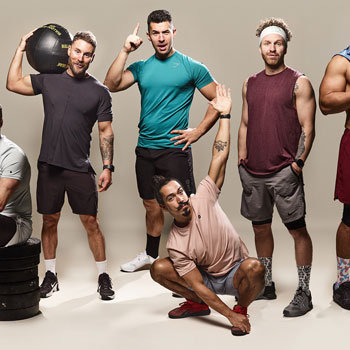
Membership is another growth area, building on lessons being learned from the recent launch of Men’s Heath SQUAD, an exclusive training club for those eager to unlock their true potential. SQUAD members access a wealth of exclusive content including training plans, videos, features, daily nutritional advice, and other support, packaged for different paid-for tiers.
“The ideal person for us is engaged with one of our brands through many different brand platforms, where we know who they are and how they engage with us and that our content is resonating with them,” Wolfson explains. “Getting people to engage and keep coming back as signed-up members gives us a lot more opportunity to engage with them further in different ways.”
The reader panel plays a central role across all Hearst UK’s commercial activities, providing an intimate understanding of Hearst UK’s audiences’ evolving wants and needs. Running research and gathering insight into consumer sentiment, for example, is essential if Hearst UK is to prove it is delivering on its brands’ contextual positioning in the marketplace.
Keeping it positive
“Positivity scoring is important to us because we talk about ourselves in the market as being a beacon for positivity and how we help our consumers get more out of life. And among our readers, there are still positive attitudes, and part of that is the passion points our brands appeal to and our content, which takes people out of the everyday,” Wolfson explains.
“When we see consumer confidence is good around our brands, this gives us greater confidence around our revenue trajectories. And it’s looking positive at this point, despite what’s going on in the rest of the world.”
Client wants and needs are another powerful driver of Hearst UK’s commercial activities, of course. And expectations around diversity, equality, and inclusivity – or diversity and belonging (D&B), as Hearst UK calls it – as well as sustainability are now important and rapidly getting more so.
“Advertisers quite rightly want to make sure Hearst UK as a business is championing D&B, whether that’s through our editorial content, the commercial content we produce with our partners, or our own commitments and how we show up to work,” she says.
“We have had a D&B committee in place here since 2017, so it’s very much on our agenda. And while we are held accountable by our clients, we hold our clients accountable, too – and this means mentioning D&B up front to clients and their agencies when each brief comes in.”
Another important client expectation of publishers these days is authenticity.
“We talk a lot about purpose. And we have particular purpose campaigns that can be led out of editorial that we can then roll out across all our brands and talk to partners about,” Wolfson continues, referencing ‘Project Body Love’, which came out of Women’s Health.
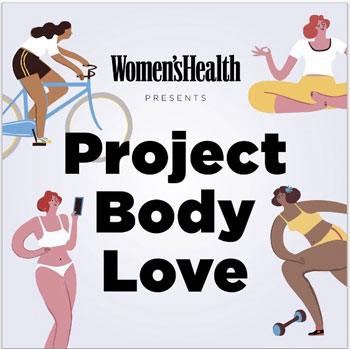
This campaign was inspired by Hearst UK research which revealed how terribly British women feel about their bodies compared with many women elsewhere. So, the findings were used to develop a brand partnership with Philips and power a campaign to boost women’s body positivity which was extended across a number of Hearst UK brands.
Another campaign running this year is ‘Change the Change’, around menopause.
“In a content business, you can change perceptions around a wide array of issues, including diversity and sustainability, and educate people around what they can do,” she adds. “Done well, it generates tremendous benefit and value.”
Looking ahead, Wolfson is excited by the many challenges of today’s publishing landscape.
“There’s always constant evolution; always things you can be doing. And with brands such as ours – with such a broad audience in so many verticals with so many different commercial opportunities – that’s really exciting. It’s what gets me out of the bed in the morning,” she says.
“But as consumer publishers, we are held to a different level of accountability because of what we are.
“We must come up with revolutionary ideas and first move advantages, which is great. But because of the other platforms we are now up against, we must always ensure we remain the extremely trusted medium we are. Our uniqueness lies in the content we produce, and the level of trust people have in it. So, whatever we do, we have to protect that at all costs.”
This article was first published in InPublishing magazine. If you would like to be added to the free mailing list to receive the magazine, please register here.







